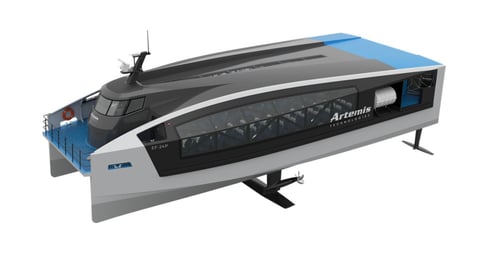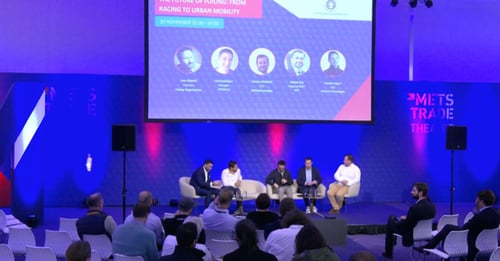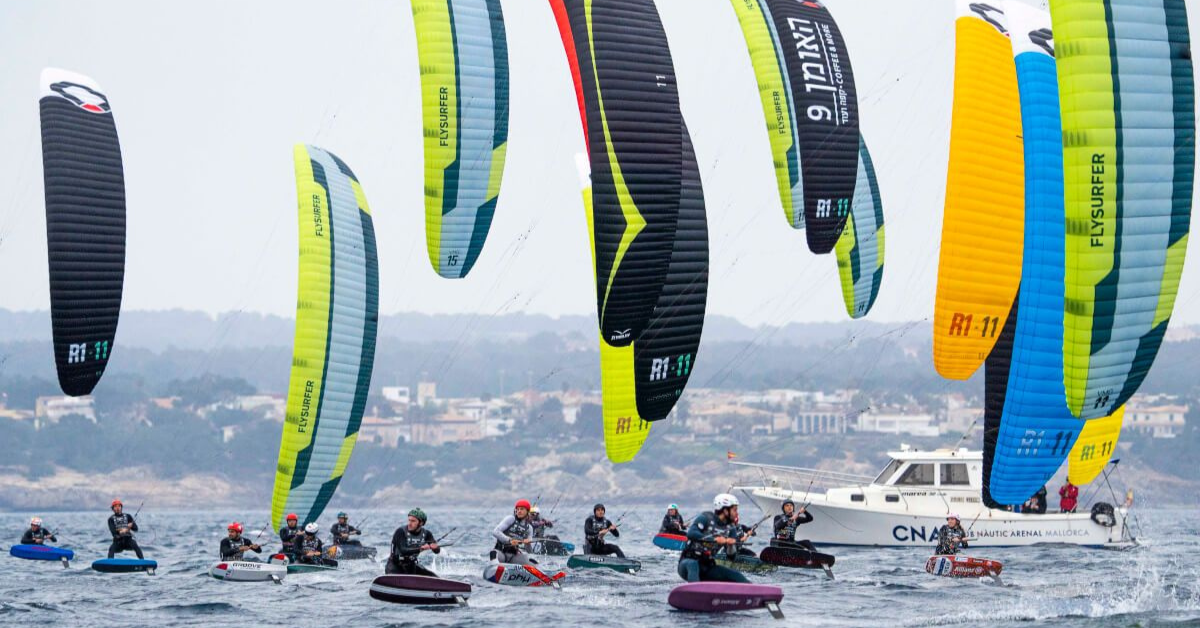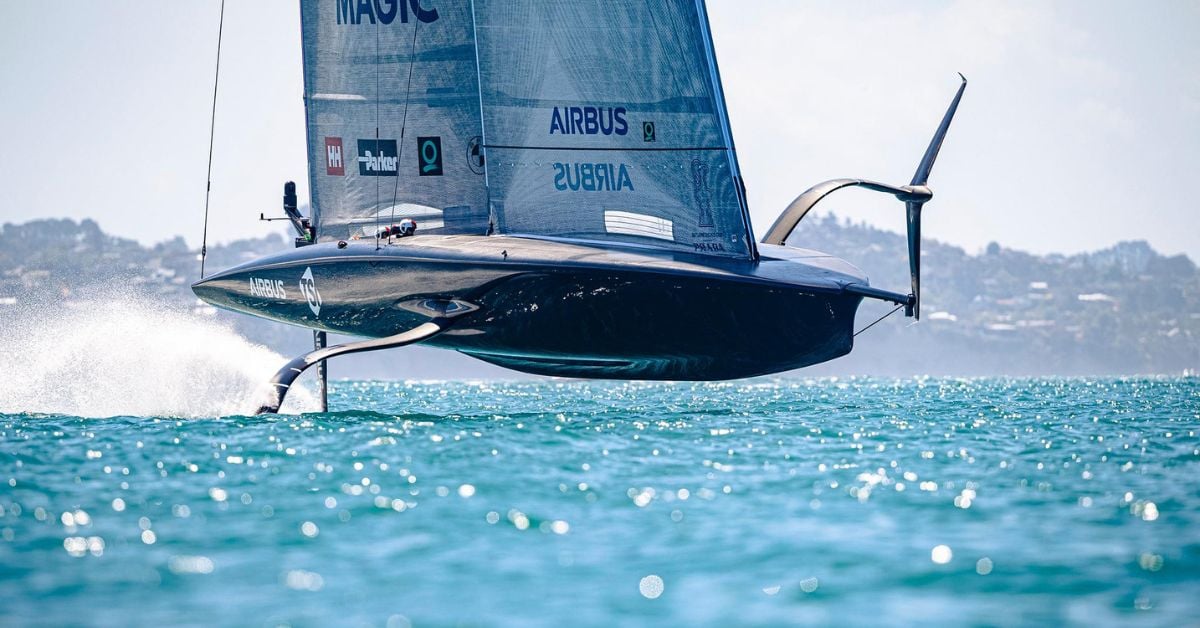
What are the key enablers for more widespread adoption of foiling across the marine industry in the future? Kim Hollamby summarises the highly informative content of last year’s Future of Foiling Metstrade stage presentation.
Foiling has been rapidly emerging in recent years from highly specialised prototype-style systems in the hands of expert constructors and users, to more mainstream awareness. This has been boosted through spectacular high-profile events like SailGP and the America’s Cup and the efforts of Metstrade partner, The Foiling Organization.
The core idea of flying your boat above the water offers several key benefits that are high priorities for the marine industry today – occupant comfort, exciting experiences, energy saving, and significant reduction of environmental impact. However, it largely remains a highly technical field in which to design, build and operate a boat. What will it take to move foiling from wider awareness to mainstream adoption? The Metstrade stage last year saw The Foiling Organization’s founder, Luca Rizzotti, draw on the expertise of four industry pioneers to discuss what is possible now and how to improve the probability of wider adoption.
One size does not fit all
One of the first and most important points made by the panel is that there needs to be very specific iterations of foiling systems for each intended application and use case.
“People believe that hydrofoils are mainly applicable to speedboats,” Eloy Rodriguez of Spanish engineering consultancy Foilchemy explained. “But there is a wide configuration of foil designs that can be applied to many types of boat. Each speed has an optimal foil configuration and size.
“For low speeds of 6-7 knots people have been employing a combination of foils and torpedoes (which provide additional lift through their buoyancy). As you step up in speed you need to reduce the size of the torpedoes and increase the size of the wings until around 15-18 knots, where you use just foils. From around 18-40 knots we can use conventional foil profiles which will reduce in size according to intended speed. The barrier is between 40-50 knots where you hit cavitation problems, requiring changes in geometry like the swept wings of a high-speed aeroplane. For very high speeds up to 100 knots we can use super-cavitating foils (which create a continuous bubble around the foil to reduce drag) but it’s difficult to maintain the stability of these foils and more development is required.”
Simon Schofield, CTO of BAR Technologies, agrees that one size does not fit all: “We’ve been involved in many different configurations, from foil assistance where we’re only creating around 30% of the hydrodynamic lift and using that for stability, comfort and some fuel saving, right up to fully foiling. My takeaway is there’s no single option that suits all situations; there are a lot of related drivers around the practicality and complexity of systems, where they are being used and the appetite for clients to adopt foiling.
“It’s a much bigger step to go fully foiling in a big sea state versus a semi foiling project where it’s still saving half the fuel and providing greater ride comfort. People will become more comfortable with foiling as the technology develops and that will lead to efficiency gains. We’ll also need open water vessels capable of foiling in flatter seas but able to shift in more challenging conditions to semi-foiling (where the hull produces the majority of the lift) or skimming (where the foils do around 80% of the work).”
Schofield highlighted the virtues of semi-foiling as a stepping stone to adoption in more mainstream demands of the leisure marine market. Such as for example the gap often seen between top speeds upwards of 30 knots that motor yacht customers demand at a boat show and the actual often much lower pace they choose to cruise at when considering fuel bills. This might mean a design that is sub-optimal for how the boat is operated away from the marina berth: “BAR created the FOSS (Foil Optimised Stability System) after working on the America’s Cup. We used it first with Princess Yachts (for that company’s 50-knot concept R35 sports yacht, launched in 2018) and then applied it to some larger vessels as well. It’s a semi-foiling configuration where we optimise the system over a much wider speed range.”
Proving the benefits
Some of the best insights on the energy saving and passenger ride comfort benefits of foiling are currently coming from the commercial marine sector, on sizes of vessels equitable to the yacht building sector. Convincing operators to adopt new technology can be a hard sell though, as Romain Ingouf, CTO or Artemis Technologies explained: “The commercial world is very driven by financial considerations. Bringing something as groundbreaking as foiling technology to a traditionally risk averse sector is challenging, but there are significant upsides.”
The fully electric Artemis EF-24 foiling ferry will enter service in 2026 with UK operator Red Funnel on its high speed 10nm route between Southampton and Cowes on the Isle of Wight. Ingouf said Artemis expects to achieve £4m (€4.8m) savings in total cost of ownership after five years versus Red Funnel’s current diesel-powered high-speed catamarans. That factors in battery replacements every 2.5-3 years given a busy daily schedule of 26 sailings, 344 days per year. So, foiling in this case not only brings benefits of low wake and improved passenger comfort, but also saves the operator money and enables an emission-free solution. Plus, from the leisure marine perspective, it will place foiling and electric propulsion right under the noses of many thousands of UK leisure boat users sailing in the Solent each year.

Convincing the customer
Ingouf is also aware of the need to overcome the potential scepticism of any customer and their fear of unreliability and difficulty in operating a foil-equipped vessel – lessons that apply equally to any potential foiler for the leisure market too: “Sometimes for us the question is as simple as can you make a vessel fly, so a customer demonstration is critical. We want the captain to have a simple interface with minimal action required to keep the boat airborne – that’s critical also for getting the technology adopted by the market.
“As we push very groundbreaking technology from the racing world to a commercial application, we need to do that in a safe way. Artemis must be mindful that it’s a technology to carry passengers from A to B and so we must be on a journey with the regulation bodies to bring that new technology forward. We’ve been lucky to partner with DNV on our EF-24 ferry development and worked closely together, not only on the foiling aspects but also electric propulsion and high voltage systems.”
Keeping pace with the technology
Aakash Dua, Regional BDM of DNV, confirmed the challenges that more widespread adoption of foiling are posing for rule setters as they try to keep pace with the technologies involved. Plus the much greater dynamic loads and human factor demands that can result. He explained that commercial regulations for foiling vessels differed from country to country, calling for a global standard that would better protect and yield the benefits of foiling in the future. He identified the need for system redundancy and strengthening of forward hull sections while mindful of weight sensitivity as two areas that could usefully be improved upon within existing commercial regulations.
Considering the picture of how the whole foiling sector could stay safe and ahead of legislation, Eloy Rodriguez, believes it would benefit from a RAMS approach (Reliability, Availability, Maintainability and Safety). “This is not a new discipline, he explained. “It emerged in the military and space sectors around 60 years ago. It’s a procedure that helps us to know the probability of system failures, the effects of these failures and how to reduce the incidence of them. It needs to be applied from day zero of the design.
“First, we study known failures, for example what we have learned when a foil has been damaged by debris. With this knowledge, we can design boats from day zero to avoid these kinds of incidents. We also need to analyse the availability and failure rate of the many components from the different suppliers involved in a foiling system. This enables an estimate to be made of life cycle and ensures we have a safer system that will work as intended for the application. This will help to mature the foiling sector, assisting certification authorities and insurance companies.”
Metstrade and foiling
The Future of Foiling: From Racing to Urban Mobility – was presented on 20 November 2024 at the Metstrade stage by Luca Rizzotti, founder of The Foiling Organization, Eloy Rodriguez, manager of Foilchemy, Simon Schofield, CTO of BAR Technologies, Aakash Dua, Regional BDM of DNV and Romain Ingouf, CTO of Artemis Technologies.
Metstrade 2025 will once again feature a dedicated Foiling Technology Zone in Hall 7.
Read more about The Foiling Organization here.

.jpg?h=400&iar=0&w=1200)

